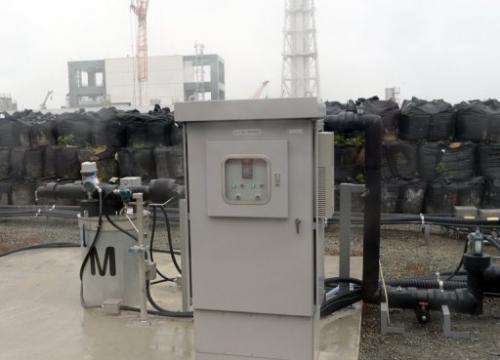Toxic radiation in groundwater at Fukushima: operator

Cancer-causing radioactive substances have been found in groundwater at the crippled Fukushima nuclear plant, its Japanese operator said on Wednesday, as it pledged to prevent it getting into the sea.
Tokyo Electric Power Co (TEPCO) said tests showed the highly toxic strontium, a chemical that can cause bone cancer if ingested, was present at levels 30 times the permitted rate.
The firm said it had also detected tritium, a radioactive isotope of hydrogen used in glow-in-the-dark watches, at around eight times the allowed level.
"From groundwater samples we collected, we detected 500,000 becquerels per litre of tritium, that is very high," a TEPCO official told a press conference.
The substances, which were released by the meltdowns of reactors at the plant in the aftermath of the huge tsunami of March 2011, were not absorbed by soil and have made their way into underground water.
Subsoil water usually flows out to sea, meaning these two substances could normally make their way into the ocean, possibly affecting marine life and ultimately impacting humans who eat sea creatures.
However, a TEPCO official said seawater data showed no abnormal rise in the levels of either substance.
He added the company believed the groundwater was largely contained by concrete foundations and steel sheets, and any gaps were being plugged with a material known as "liquid glass" that would solidify, forming a physical barrier.
The revelations are the latest in a growing catalogue of mishaps at the crippled plant, more than two years after the worst nuclear disaster the world has seen in a generation.
Workers used tonnes of water to cool the melted cores of the reactors and TEPCO is having to store this radioactive water onsite. However, reports continue to emerge of leaks in storage pools, tanks and pipes.
Critics say improvised fixes put in place at Fukushima since the disaster leave it vulnerable to mishaps and at the mercy of nature, with no immediate end in sight.
Although the natural disaster that sparked the meltdowns claimed more than 18,000 lives, no one is officially recorded as having died as a direct result of the nuclear catastrophe.
However, tens of thousands of people were forced to leave their homes and businesses in the area around the site. Many remain displaced, with scientists warning some places may have to be abandoned forever.
© 2013 AFP




















